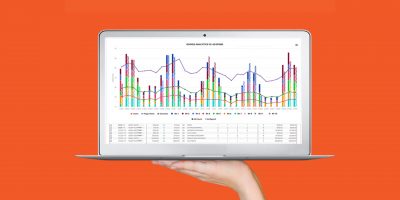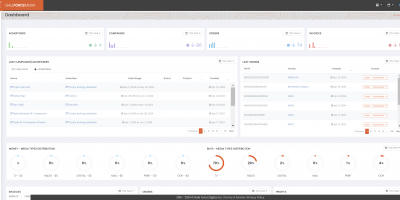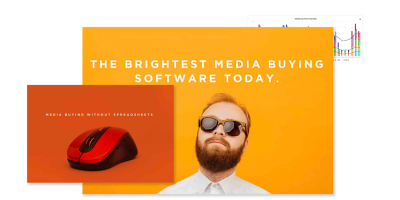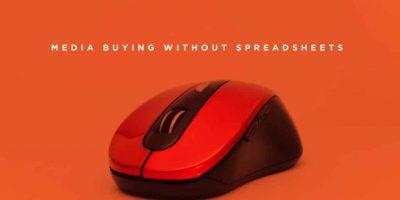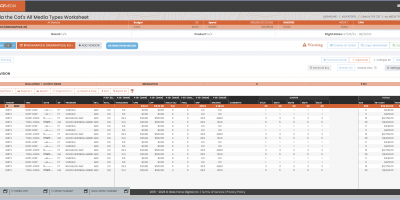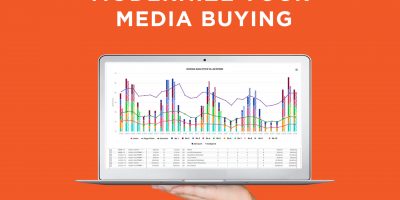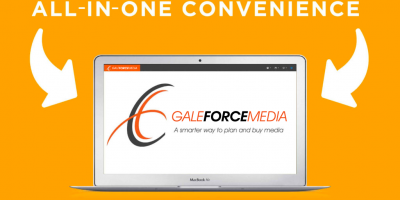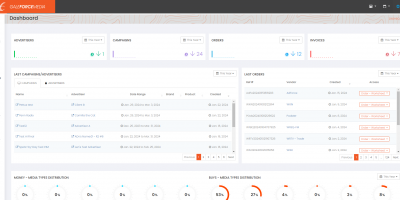 A lot goes into buying media: demographics, targeting, analyzing Gross Ratings Points (GRPs), impressions and so forth. Because of this, the process is often time consuming; plans can take days, weeks or months, depending on variables involved.
A lot goes into buying media: demographics, targeting, analyzing Gross Ratings Points (GRPs), impressions and so forth. Because of this, the process is often time consuming; plans can take days, weeks or months, depending on variables involved.
Leaning on modern solutions can greatly alleviate your time crunch. Antiquated software is finally being replaced with 21st century upgrades that can reduce your time spent buying media by up to 75%, depending on capability. The new wave is also automating media buying to further save time. Known as programmatic media buying, the format allows for an online auction to bid for impressions. Innovations like these, along with the ability to execute multiple buys for different media types at the same time, are the features long craved by media buyers that can help make the best media buys in the least amount of time.
Do You Have Problems Executing Media Buys in a Timely Fashion?
A multitude of challenges often arise for even the seasoned media buyer. The biggest problems include:
- Time and budgetary costs associated with buying media
- Researching, gathering and inputting information into spreadsheets and/or media buying programs
- Adapting to outside issues beyond your control
- Manipulating said information to provide the buyer and agency with realistic results clients expect time in and time out
What Research Must You Conduct to See Quantifiable Results?
The strategy you implement will center around your client’s target audience. To determine your target market, your research should hone in on demographic segmentation; that is:
 The age range or generation your desired customer falls into
The age range or generation your desired customer falls into- Their income (and with it, buying habits and inclinations)
- Where they’re located
- What life events they are presently going through which may shift spending priorities.
The more you know about your audience, the more likely you are to tap into what inspires them to buy.
After the target market is identified, you need to identify the ideal types of media for reaching them. Are traditional mediums like TV and radio appropriate, or might they be best reached through social media or a streaming service like Spotify? In 2010, Twitter was in its infancy and Facebook was still growing from a collegiate-only platform into the ubiquitous heavyweight it has become. Just 10 years later, TikTok, Instagram and Snapchat are king. Yet more changes to the social media landscape are coming. Ever hear of Vero? If not, you soon will.
How Can You Respond to Issues Beyond Your Control?
 Adding an additional layer of complexity to the research phase of a media buy, newer regulations like the California Consumer Privacy Act (CCPA), as well as the copycat rulings that are bound to follow, may complicate the way you buy media in the future. These regulations are not to be taken lightly and are indicative of a seismic shift in the way you will serve your audience with the proper targeted ads. The key point to be taken away from this is that being an effective media buyer requires constantly staying up to date with trends and other factors beyond your control, or even staying ahead of them. Just look at the possibly permanent impact the COVID-19 outbreak has had on how we live everyday life. Ad agencies have been strongly impacted by the virus, especially in the type of messaging being used to connect with audiences. Across-the-board changes to how advertising and targeting are conducted are part of the new reality as we all navigate uncharted waters.
Adding an additional layer of complexity to the research phase of a media buy, newer regulations like the California Consumer Privacy Act (CCPA), as well as the copycat rulings that are bound to follow, may complicate the way you buy media in the future. These regulations are not to be taken lightly and are indicative of a seismic shift in the way you will serve your audience with the proper targeted ads. The key point to be taken away from this is that being an effective media buyer requires constantly staying up to date with trends and other factors beyond your control, or even staying ahead of them. Just look at the possibly permanent impact the COVID-19 outbreak has had on how we live everyday life. Ad agencies have been strongly impacted by the virus, especially in the type of messaging being used to connect with audiences. Across-the-board changes to how advertising and targeting are conducted are part of the new reality as we all navigate uncharted waters.
Keeping up with the constant changes in the world, which are in turn altering the media buying landscape, requires a solution that offers trend forecasting and GRP analysis. The abilities to import electronic avails and utilize a multi-market, multi-media setup with multi-sort and multi-filter options are crucial as well. Features like these make your job easier and quicker, allowing you to accomplish more in your day besides buying media.
What Can Be Accomplished with Good Research?
Manipulation of data is just as vital as gathering it. When it comes to spending the boss’s money on reaching an audience, you had better ensure the information you’re using to decide how to spend that money is accurate. Such has been the burden of being a media buyer for all these years.
Excel has long been the go-to for media buying, with 76% of buyers still relying on it daily. Excel does have its advantages (already paid for, ease of use, portability) but also leaves a lot to be desired by those seeking growth. Unbeknownst to many media planners and buyers, better options exist that are also portable and easy to use, along with offering much more functionality: all-in-one interface, management of multiple media types, ad performance measurement, invoice reconciliation and other manipulations that Excel cannot accomplish.
Does a Pain-Free Media Buying Option Exist?
Given the challenges of buying media today, there are software solutions to streamline media planning and buying to increase productivity moving forward. Buying media does not need to be traumatic. Or painful. Or time consuming. The ideal tool could solve the aforementioned problems and relieve the stress incurred by media buyers and free them up to accomplish other tasks they are juggling. Media buyers who have steered clear of Excel have been conditioned to accept the industry norm platforms, clunky with their 30-year-old antiquated interfaces and lack of browser-based capability. If your agency has purchased a dedicated media planning platform even three years ago, you’ve probably been using the equivalent of a Smith Corona Typewriter with a hard drive and monitor bolted on it; it gets the job done, but isn’t optimized for the needs of today’s media buyer.
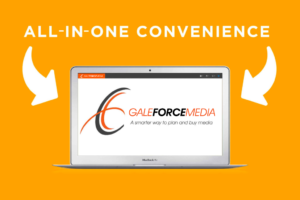 We are happy to report modern results-minded solutions are finally coming forth to solve the long-standing problems of buying media. Web-based, forward-thinking options like GaleForceMedia that feature Google, Comscore and Nielsen integrations and manipulate multimedia and multi-market data easier, in a fraction of the time and cost, keeping you on budget and offering work-from-home flexibility. Companies like GaleForce Digital Technologies, designers of GaleForceMedia, have used yesterday’s concerns to be thoughtful of tomorrow’s needs and are building SaaS platforms with more agility and user-friendly interfaces that are rendering the dinosaurs of the 1990s extinct. It’s great to see that the concerns of modern media buyers are finally being addressed in the form of research and development of software that better serves its users.
We are happy to report modern results-minded solutions are finally coming forth to solve the long-standing problems of buying media. Web-based, forward-thinking options like GaleForceMedia that feature Google, Comscore and Nielsen integrations and manipulate multimedia and multi-market data easier, in a fraction of the time and cost, keeping you on budget and offering work-from-home flexibility. Companies like GaleForce Digital Technologies, designers of GaleForceMedia, have used yesterday’s concerns to be thoughtful of tomorrow’s needs and are building SaaS platforms with more agility and user-friendly interfaces that are rendering the dinosaurs of the 1990s extinct. It’s great to see that the concerns of modern media buyers are finally being addressed in the form of research and development of software that better serves its users.


